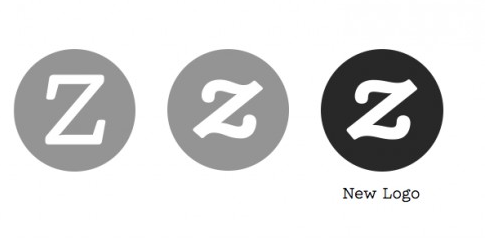Register by Jan 13 to save on passes and connect with marketers from Uber, Bose and more

You probably won’t notice unless you’re a typeface nerd, but online marketplace Zazzle has created its own typeface.
Dubbed “Virgo,” the font was designed by Brooklyn’s Pagan & Sharp. It was the natural progression after a series of changes at Zazzle, which recently moved into a new headquarters in Redwood City, California, and redesigned its website.

Designed to reflect the site’s “handmade” aesthetic, the typeface is a “headline” font that will appear on the site and is also available to Zazzle employees to use in their signatures and other materials.
“When you strip everything down, the typography gives our product life,” said Jeremy Britton, director of design at Zazzle. “If you’re a company investing in how things are made, you have to do something like this.” The company was previously using Archer, a beautiful but ubiquitous font that didn’t really match the handmade, homegrown aesthetic of the company.
Zazzle is the latest in a series of brands that have either redone or created for the first time proprietary fonts. A few months ago, Intel debuted “Clear,” a new typeface that it said was necessary to maintain consistency across screens and paper. Even a city — Chattanooga, Tennessee — got in on the act, with “Chatype,” to promote its identity and spur growth. General Electric has long had its own proprietary font, dubbed Inspira, which is emblazoned on everything from aircraft engines to lightbulbs. A couple of years ago, Nokia and Dalton Maag won design awards for Pure, a new font designed to work across the mobile Web.
Christian Butte, creative director at branding firm Red Antler, said that designers have always believed that having a custom font for the company is a big part of the corporate identity. It can communicate attitudes and a certain point of view. The federal government in Germany, for example, has been emphasizing the importance of having a custom typeface in its communications to represent “modern democratic Germany,” he said. “People will start recognizing you by your font as much as your logo, over time,” said Butte.
Alex de Janosi, partner in the design practice at Lippincott, said that it’s a good idea for brands with global presences to think about investing in their own fonts. It helps in differentiating the brand, and if the font is used in multiple external communications, from products to announcements, it can strengthen the brand’s identity as much as a logo.
During Zazzle’s font process, it was clear that the Zazzle “Z” would be the focal point for the new typeface — being that the name of the company features the most uncommon letter in the language, thrice. The result was a font that appeared wet, easily malleable, indicative of handcrafted elements that would work in the digital space as easily as it would on paper.
Lucas Sharp, founder and president at Pagan & Sharp, who created Virgo, said that the trend is a “reaction” against a defining paradigm of the 2000s that didn’t place much stock in the importance of typeface in branding. Ubiquitous fonts like Archer are omnipresent in branding, said Sharp.
Still, Zazzle is still relatively unique in that it is one of the few small, Web-based brands — apart from publishers — that is investing in typography. “The industry is definitely growing,” said Sharp. It’s a combination of the fact that tools for creating typefaces have now become much more accessible, and brands understanding the need for it.
De Janosi of Lippincott said that brands can go two routes. One is the Apple way. The company uses a non-custom font called Myriad but has managed to deploy it consistently enough across products that it’s almost as if it’s now the “Apple” font. The other is what Zazzle, Nokia or Intel have done. “The font is an extension of the brand,” he said. “And they’re more important now because applications are all over digital media.” Those typefaces require more care to make them Web-ready. For example, the contours of the letters have to be “opened up” to make them easier to read on smartphones. Traditional typefaces haven’t been Web-hinted, said de Janosi.
Creating a font is also cheaper in the long run. Branding experts said that creating a custom font can cost anywhere from $60,000 on the lower end for a mid-weight font, up to into the millions for different languages. Companies without fonts they own, however, have to constantly pay licensing rights every time they apply them.
More in Marketing

OpenAI’s countdown: monetization, ads, and a Google-shaped threat
With fierce competition from Google et al, the clock is ticking for the AI company to launch its ad business.

Crisis, culture and costs: The new reality of the modern CMO
Crisis, culture and cost pressures are reshaping the modern CMO into a revenue-driven strategist uniting marketing, communications and finance.

Digiday+ Research: The marketer’s guide to AI applications, agentic AI, AI search and GEO/AEO in 2026
Digiday’s annual AI report explores how marketers are navigating the opportunities and challenges AI brings as it becomes an indispensable piece in their toolkits.





